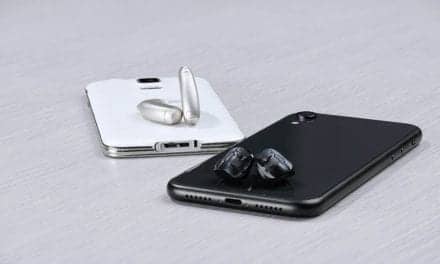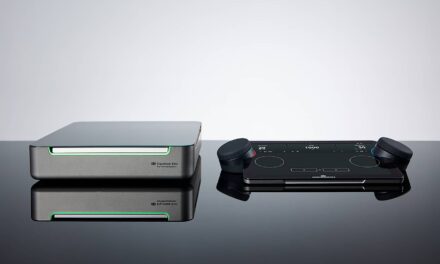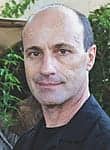The Hearing Review’s Chief Editor Melanie Hamilton-Basich sat down with Angela Bonino, PhD, a clinically trained pediatric audiologist who is an assistant professor in the Department of Hearing and Speech Sciences at Vanderbilt University Medical Center and Vanderbilt University School of Medicine, as well as director of the school’s Children’s Auditory Perception Laboratory. They discussed her research on the lack of access to adequate hearing assessments for children with developmental disabilities and what could be learned from those findings to improve pediatric hearing care.
The Hearing Review: The study published in the Journal of Autism and Developmental Disorders, which you conducted with Deborah Mood and Mary Dietrich, focused on four developmental disabilities that co-occur with reduced hearing: cerebral palsy, Down syndrome, autism, and intellectual disability. How many children are we talking about who have a lack of access to ideal hearing assessments?
Angela Bonino: In this particular study, we have access to about 131,000 children who are being seen at three clinical sites in the United States: Children’s Hospital of Philadelphia, Vanderbilt University Medical Center, and Boston Children’s Hospital. And what we see within our sample of children who are receiving clinical services at these sites is about 10% of children in our sample have one of those developmental disabilities that we’re considering. So that gives us a sample of almost 13,000 children who have developmental disabilities that we’re looking at.
Autism is the most common of the four conditions for what we’re seeing. And then in terms of thinking about how often does reduced hearing happen within children who have developmental disabilities, we know from previous literature that children with cerebral palsy, Down syndrome, and intellectual disabilities have a higher rate of having reduced hearing than what we see in the general population. And in our study specifically, children with cerebral palsy and Down syndrome were twice as likely as children in the comparison group to have reduced hearing.
HR: Why is it so important for hearing care professionals to focus on the gold standard of hearing assessment for young patients with developmental disabilities?
Bonino: Great question. Based on our clinical guidelines, the audiogram or behavioral testing is considered the most reliable source of hearing data. Now, auditory brainstem response or ABR is also considered a gold standard for infants or for other individuals who can’t perform behavioral testing. Those are the only two assessments for which we can actually use the data to fit a hearing aid.
So when it comes to actually managing reduced hearing in individuals, we need to have either audiogram or ABR thresholds to fit a hearing aid, as well as to determine eligibility for special education services or early intervention services. And most states in the United States are going to require you to have either ABR or audiogram results. So we’re really focusing in on those two particular assessments because we know they’re critical to access intervention services and support.
HR: What differences in access to gold standard assessments did you see for children with developmental disabilities in your study?
Bonino: For children in the comparison group—children who don’t have any of those four developmental disabilities in their medical record—what we see is that about 9% of children in the comparison group don’t get access to either audiogram or ABR in the first three months of hearing healthcare. In contrast, for the children with a developmental disability diagnosis in their medical record, we see 24% of children are not getting access to one of those tests in the first three months of hearing healthcare.
We then build statistical models that compute relative risk and we adjust for differences based on site, the age at the time of the first encounter, race, ethnicity, and sex because we know that those factors can also contribute to the likelihood of getting access to a gold standard assessment.
To summarize those findings, what we’re seeing is that broadly when we define children with developmental disabilities, we see that they’re four times more likely not to get access to a gold standard assessment relative to the comparison group. If children have two or more developmental diagnoses of the four diagnoses that we considered, their relative risk is actually the highest of the subgroups that we looked at. So they’re 13 times more likely not to get access in the first three months of hearing healthcare for that particular group.
We then also see differences for looking at the four specific developmental disabilities. Children with autism have a three-fold increase, whereas children with cerebral palsy have a ten-fold increase, children with Down syndrome have a six-fold increase, and then children with intellectual disability have an eleven-fold increase, again, all relative to children in the comparison group.
Listen to The Hearing Review’s Podcast Episode for the entire conversation with Angela Bonino, PhD:
HR: What are some of the main barriers to better hearing assessment access for children with developmental disabilities?
Bonino: I think there’s a lot of things to think about. Our particular study didn’t directly measure factors or barriers or facilitators. So we’re drawing on what’s been published in the literature and certainly what other clinicians and parents have also discussed with us. But I think it’s likely a multifaceted reason for some of the challenges that are happening. One of the things I think is really important to address is the misalignments of the developmental and medical profile of these children with what our assumptions are for our testing.
Behavioral testing, for example, really does assume typical development across a variety of domains. Now, our guidelines always talk about picking the test method that’s developmentally aligned with a child, but the challenge is that all of our methods still assume relatively uniform development across and within developmental domains. And that really can be at odds with what we commonly see in many of these developmental disability profiles.
It’s a common profile within autism that a child might have areas of their cognition that are actually very much so a strength for them. But then they have other areas like executive function and shifting of attention that can be very challenging for them. But our methods assume a pretty uniform cognitive profile as well as considering other domains too. And so I think that misalignment can happen with what our assumptions are for the testing. I think that is really important to consider.
There certainly has also been a lot of discussion within the broader healthcare field thinking about disability-based discrimination that children and their families can experience. And I think that that’s important to be thinking about, too, and what might be some perceptions and experiences that these individuals are routinely encountering within the healthcare field more broadly. I think there’s also challenges around the training that some audiologists may have, and their comfort level sometimes within the context of pediatrics and then also developmental disabilities.
So those are just some of the examples to be thinking about that may be contributing to some of these disparities that we’re seeing.
HR: What can HCPs do to improve access to hearing assessments for children with developmental disabilities?
Bonino: I think one thing to acknowledge is that there is a tremendous amount of research that needs to be done to help give practitioners better tools and better guidance around what can be done. So I do want to recognize that practicing audiologists are in a tricky position because there’s not really great guidance that’s specifically tailored to children who have developmental disabilities, and especially when we start talking about very specific developmental disability conditions. And that makes it really challenging to do their job. And even a lot of our literature that we have around newborn hearing screening and early intervention and language outcomes, a lot of times children with developmental disabilities are excluded from that research base.
Now, one thing I can tell our audiologists that I think is always important to remind them is that we all know that early intervention is really important. And we often talk about the 1-3-6 model—and many states have started moving even to the 1-2-3 model—of “screen by one month, get a diagnosis by three months, and then start intervention by six months” for when we talk about the newborn hearing screening process. We know based on that data that achieving the 1-3-6 benchmarks results in better language and developmental outcomes. And that is true for children who have co-occurring developmental disabilities as well. And so hitting those benchmarks is really important.
And I think that we all should be motivated to make sure we’re continuing to hit those benchmarks and having early diagnosis, even when we’re talking about kids who might show up in the clinic at age three, age four, or even 10 years of age, and well outside of that newborn period, because that is a really common experience. That’s one thing our study also emphasizes is that the median age of the first encounter is three years within these clinical samples. And so even though we oftentimes really think about our newborns, we also need to think about our toddlers and preschoolers, early school-aged kids, and how we’re going to make sure we promote timely diagnosis and access to the appropriate supports to facilitate developmental outcomes for these kids.
HR: Do you think it’s time for audiologists and other HCPs to look at changing the standard of pediatric care with a goal of more broadly applicable hearing assessments?
Bonino: I think it is well time for us to have solid clinical trials, pragmatic trials that are pushing into clinic to really be thinking about how do we make a more expansive toolkit for pediatric audiologists to facilitate testing and starting to collect evidence that supports usage of developmentally informed strategies to start building that evidence base around what care could look like when we step back and really focus on how do we make this care inclusive.
I think a challenge is a lot of the practices and methods that we use in pediatric audiology really make a lot of assumptions around development and the assumption around the child having typical development or having typical health profiles.
And the reality is because of the high survival rates that we have within our NICU graduates, as we have shifting etiologies for what reduced hearing and who we’re monitoring, we need to make sure that our practices also evolve to reflect our common patients that we’re seeing and that we have really good tools for clinical audiologists to use.
That means thinking about how can we either redesign our current test methods or evolve into more inclusive test methods, but also thinking about even simple things like scheduling. Like how do children who have developmental disabilities benefit from a longer test session? And how do we work with our schedulers to make that happen at our sites? What does reimbursement look like? There’s just a lot of factors to think about.
We also have a lot of concern that even when those children do get access to gold standard testing, the amount of thresholds that are collected in a test session may be less than for a child who’s typically developing of the same age. And so how do we have robust support structures to make sure that that child gets in quickly to finish that testing, even when trying to hit those benchmarks with older children, so it doesn’t become a nine-month process to get a full audiogram and to move on with hearing aids if that’s what needs to happen for that child? How do we go ahead and build those systems and have the right types of training for our providers so that families and children can move through the system and get to a timely diagnosis and access to supports?
Listen to The Hearing Review’s entire Hearing Horizons podcast episode with Angela Bonino at https://hearingreview.com/resource-center/hearing-podcasts/improving-hearing-care-for-children-with-developmental-disabilities.





